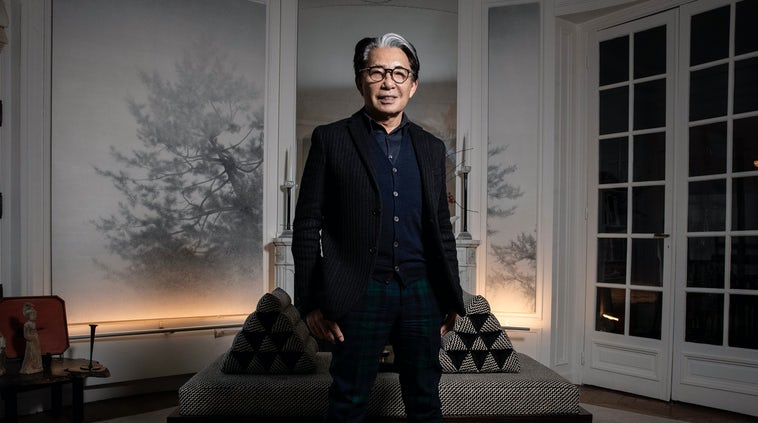
Kenzo Takada
Iconic Japanese fashion designer Kenzo Takada died yesterday at 81 following complications from the Coronavirus. Takada contributed extensively to the fashion industry and is widely acknowledged as one of the first designers to introduce Japanese styles to Western fashion.
Born in 1939, in Himeji Japan, Takada was one of the first male students to attend Tokyo’s prestigious Bunka Fashion College in the 1950s. Shortly after at the age of 25 he won the 1961 Soen Award and earned himself a designer position at the Sanai department store. In 1964, the year of the Tokyo olympics, the block of flats in which he was living was set to be demolished to make way for an olympic stadium. Compensation was given to all tenants and in 1965 Takada, inspired by emerging haute couture designers Yves Saint Laurent and Karl Lagerfeld, used his compensation to purchase a one way ticket to France becoming one of the first Japanese designers to settle in Paris.
On arriving in Paris, Takada sold his sketches to fashion houses and department stores in order to create a source of income. In 1970 he found a small space to rent in the Galerie Vivienne where he opened his first boutique, ‘Jungle Jap.’ “I decorated the shop myself with little money”, Takada told the South China Morning Post newspaper. “One of the first paintings I saw in Paris and fell in love with was a jungle painting and that was the inspiration for the shop.” Controversy soon arose around the use of the slur ‘Jap’ appearing in the brand’s name. Takada had said that he wanted to turn the meaning of the word into something beautiful. But after mounting criticism, especially in the United States, Takada changed the brand’s name to his first name, Kenzo.
In 1970 Takada presented his first collection at his boutique, but with very little money the fledgling designer had to use whatever he could afford. Takada, using bolts of mismatched, cheap fabric from the Saint Pierre market in Montmartre, created an eclectic clash of prints, patterns and colours that the Paris fashion world had never seen before. This evocative debut collection featured kimono inspired silhouettes with vivid floral motifs, that would go on to become a signature of the brand. This new silhouette completely rejected the streamlined, slender silhouettes that were popularised in the 1960s. Things really took off for the designer in June 1970 when Elle featured one of his looks on it’s front cover and by the mid 1970’s Takada’s catwalk shows were immense and his glamorous and ever growing client list included Catherine Deneuve and Bianca Jagger. Within just a few seasons Takada had built up a legion of loyal fans and hoards of press and buyers were attending his extravagant shows.
Takada’s designs were heavily influenced by his native Japanese designs, he wanted to differentiate his style from that of his French peers. Vibrant colours and daring patterns made frequent appearances in all of his collections as well as bold, voluminous shapes that he achieved by rejecting Western methods of moulding garments precisely with darts, seams and fastenings and introducing the Eastern custom of wrapping loose layers. Before Takada, western designers often picked out influences from East Asia at times blurring the lines between cultural appreciation and cultural appropriation. Takada reclaimed those influences, honouring their true heritage whilst updating whimsical Japanese floral and animal prints for European tastes. He never conformed to conventions of masculine and feminine clothing, instead opting for what he called ‘freedom and harmony’ in his work. Although always inspired by his Japanese heritage, Takada also cited Paris as a source of inspiration,’ Every wall, every sky and every passerby helps me build my collections” he said of the City of Light.
Kenzo’s popularity and success continued to grow and the brand introduced a menswear line in 1983, fragrances in 1988 followed by more casual lines such as Kenzo Jeans and Kenzo Jungle.
In 1993 LVMH acquired the Kenzo brand for around 80 million dollars. On hearing of Takada’s passing Bernard Arnault, the CEO of LVMH, remarked; “From the 1970s Kenzo Takada has infused into fashion a tone of poetic lightness and sweet freedom which inspired many designers after him.”
Takada’s bold move from Tokyo to Paris set a trend for many other acclaimed Japanese designers, including Issey Miyakee and Kansai Yamamoto who chose to follow in his footsteps. Marc Jacobs and Dries Van Noten among others have also cited Kenzo Takada as influences for their own work proving how far Kenzo Takada’s legacy spread.
